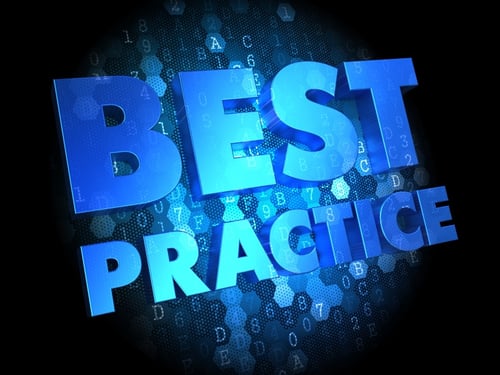
As a SaaS entrepreneur, do you struggle with scaling your business without sacrificing profitability? You’re not alone; a lot of business owners face this dilemma.
The truth is that achieving long-term success in the SaaS business isn't only about chasing numbers. It’s also about having a financial model that supports profitability and sustainability.
In this guide, I’ll walk you through the essential steps to optimize your SaaS financial model and help fine-tune your strategy for lasting profitability and growth in your saas finances.
Continue reading to learn more.
Understanding SaaS Financial Models
First, if you’re to optimize a finance model for long-term profitability, you need to understand what you’re optimizing.
A SaaS financial model is a forecasting tool that helps you project your future financial performance based on data and key metrics. It provides insights into revenue streams, customer behavior, and overall business health.
According to the Younium revenue recognition guide, you must record revenue data per the rules and regulations for accurate revenue data records. Analyzing historical data and market trends helps forecast your business's future MRR and ARR.
The primary goal is to achieve profitability by maximizing revenue while managing costs effectively. Here’s a table showing a few Saas financial model metrics:
- Monthly Recurring Revenue (MRR): Predictable income from subscriptions each month
- Customer Acquisition Cost (CAC): Total cost of acquiring a new customer, including marketing and sales
- Customer Lifetime Value (CLTV): Total revenue expected from a customer over their lifetime
Churn Rate: Percentage of customers who cancel subscriptions
Best Practices for Building a Financial Model

Now that I’ve explained SaaS financial models and some key metrics, it’s time to get into the best practices needed to build a model that drives growth and sustainability in your online business.
The following practices cover the key aspects of building, maintaining, and optimizing a financial model for long-term success:
- Define your purpose: Clearly state the objectives of your financial model, and know if you want to predict revenue or analyze costs.
- Have a dynamic structure: Organize your model into three sections: inputs (assumptions), calculations (financial projections), and outputs (results). This makes it easier to update and understand how changes affect outcomes.
- Regular updates: Treat your financial model as an evolving document. Update it regularly with actual performance data to ensure it remains accurate and relevant.
- Utilize technology: Use tools like subscription management software, specialized SaaS financial modeling tools, or partner with SaaS development service providers to build custom solutions that streamline your process and improve accuracy.
Strategies for Achieving Long-Term Profitability in SaaS

Building a profitable SaaS business requires more than just acquiring customers. Sustainable success comes from smart financial planning, efficient operations, and strong customer retention.
Here are five strategies to ensure long-term profitability in your business:
Optimize pricing strategies
Test different pricing models to maximize revenue while ensuring affordability for customers. Common SaaS pricing models include:
- Tiered pricing: Offers multiple plans with varying features and price points to cater to different customer segments
- Usage-based pricing: Charges customers based on their consumption (e.g., number of users, API calls, or data usage)
- Value-based pricing: Prices the product based on the perceived value it provides to customers rather than cost or competition
Align pricing with customer value to drive higher MRR and long-term growth. A well-structured SaaS startup sales strategy ensures that pricing supports customer acquisition and retention.
Strengthen your unit economics
A sustainable SaaS business must maintain a strong LTV to CAC ratio to ensure long-term financial health. To improve unit economics:
- Boost retention: Improve onboarding, provide proactive support, and reduce churn to increase LTV
- Lower CAC: Optimize SaaS marketing and sales efficiency to acquire customers at a lower cost
Manage costs efficiently
Regularly assess expenses, including server costs and support operations, to identify cost-saving opportunities. Prioritize efficiency without compromising service quality.
Invest in scalable growth

Your SaaS business can achieve long-term profitability by maintaining a balance between cost efficiency and strategic investments.
Focus on the following:
- Product innovation: Continuously improve features to retain users and justify pricing
- Strategic marketing: Use data-driven acquisition strategies to attract high-value customers
- Market expansion: Identify new customer segments or global opportunities to increase revenue streams
Leverage scenario analysis
SaaS businesses operate in dynamic markets, making anticipating potential challenges and opportunities essential. Use these scenario analyses to evaluate different financial outcomes:
- Best-case scenario: Projects high revenue growth and customer retention. It helps you plan for scaling and investment opportunities.
- Worst-case scenario: Assesses risks like high churn, economic downturns, or increased competition. It helps you prepare contingency plans to mitigate financial losses.
- Most likely scenario: Combines realistic projections based on historical data and market trends to guide day-to-day decision-making.
Regularly analyzing these scenarios allows you to adapt pricing, cost structures, and growth strategies for long-term profitability.
Sustainable Growth and Long-Term Profitability
Knowledge and data can be useless if you don’t know how to apply them because information without action or direction has no impact. The same goes for your SaaS financial models; having key metrics means nothing unless you use them to drive strategic decisions.
By analyzing these metrics, making informed adjustments, and utilizing these strategies, you can transform raw data into sustainable growth and long-term profitability.